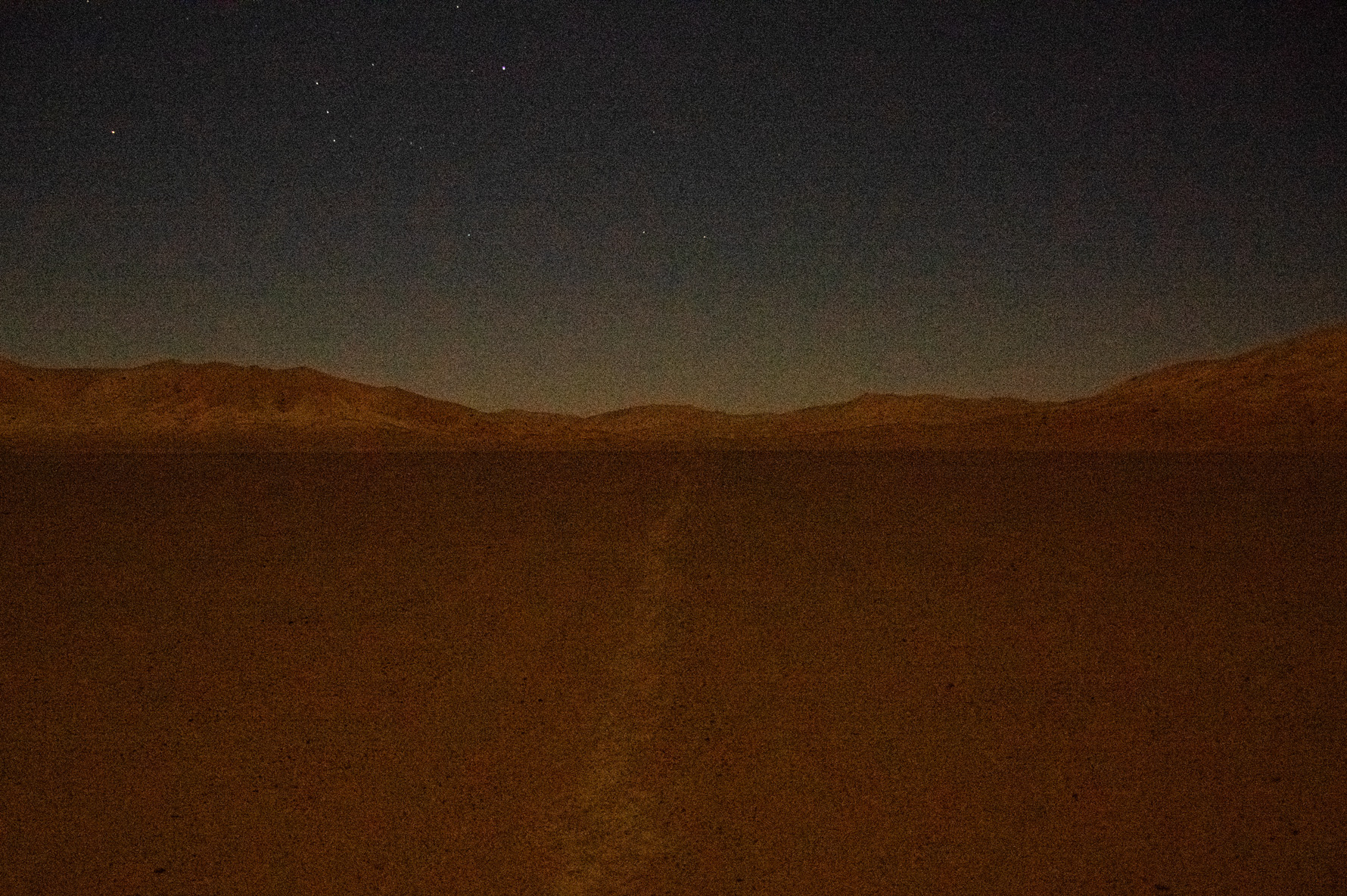
When you are lost in the desert, you might think your best option is to keep walking in a straight line, in the hope of hitting a road or some other landmark. Research has shown that you will most likely walk in a circle and end up where you started.
I wanted to experiment with getting lost by intentionally walking in circles. I chose the emptiest, most isolated landscape you can imagine: the Rub’ al Khali desert in Oman. In a dry flat valley – a wadi – I created a circle by walking the same route on seven consecutive days. The perimeter of the circle was about 3.7 kilometres, a 45 minute walk. Along the track I created chalk circles with text. You cannot see these from afar, they only appear when you are really close.
By walking for seven days in a row, I emphasise the endlessness of walking round in circles. Day after day, ending up where I began, following my own footsteps. In the empty wadi, in the punishing heat, you can’t walk away from questions.
-is it possible to get lost?
– is it a problem if you return at your starting point? If you end up where you began?
– aren’t we all walking in circles in life, all the while thinking we are going in a straight line?
My feet create the track. When I stop walking, the track will disappear and all will be gone but not lost.


2 thoughts on “Walking in circles”